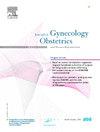间充质干细胞治疗卵巢早衰的潜力和机制。
IF 1.6
4区 医学
Q3 OBSTETRICS & GYNECOLOGY
Journal of gynecology obstetrics and human reproduction
Pub Date : 2025-09-17
DOI:10.1016/j.jogoh.2025.103031
引用次数: 0
摘要
卵巢早衰(POF)是一种常见的内分泌疾病,涉及40岁以下女性卵巢功能的丧失。临床表现为雌激素缺乏,促性腺激素水平升高,闭经,可导致生育能力丧失,增加其他疾病的风险,包括心血管疾病、骨质疏松症和情绪障碍。目前,最常见的治疗方法是激素替代疗法(HRT),它可以缓解更年期症状,但不能改善卵巢的功能。间充质干细胞(Mesenchymal stem cells, MSCs)具有自我更新和分化的能力,在损伤组织的再生中发挥重要作用。值得注意的是,越来越多的证据表明,间充质干细胞主要通过与卵巢皮层的旁分泌相互作用发挥作用,而不是促进卵母细胞的新生。这表明卵巢衰竭在POF中并不完全,留下了一个残留的卵巢环境,允许MSCs发挥作用。到目前为止,许多报道表明MSCs移植可以通过抗凋亡、促进血管生成、免疫调节和抗氧化等作用改善卵巢结构和功能,促进卵泡发育,恢复激素水平,提示MSCs有可能成为POF的替代治疗方法。因此,本研究旨在总结MSCs在POF治疗中的作用机制及应用方面的最新发现,为后续研究和临床治疗提供方向。本文章由计算机程序翻译,如有差异,请以英文原文为准。
The potential and mechanism of mesenchymal stem cells in the treatment of premature ovarian failure
Premature ovarian failure (POF), a common endocrine disorder, pertains to the loss of ovarian function in women under the age of 40 years. It is clinically characterized by estrogen deficiency with increased gonadotropin level and amenorrhea, which can lead to loss of fertility and increase the risk of other diseases, including cardiovascular disorders, osteoporosis, and mood disorders. Currently, the most common treatment is hormone replacement therapy (HRT), it relieves menopausal symptoms but does not improve the function of the ovary. Mesenchymal stem cells (MSCs) share the ability of self-renewal and differentiation, playing an important role in the regeneration of injured tissues. Notably, accumulating evidence indicates that MSCs primarily exert their effects through paracrine interactions with the ovarian cortex, rather than contributing to de novo oocyte generation. This suggests that ovarian exhaustion is not complete in POF, leaving a residual ovarian environment that allows MSCs to act. So far, many reports have demonstrated that transplantation of MSCs can improve ovarian structure and function, promote follicular development, and restore hormone levels by anti-apoptosis, promoting angiogenesis, immunomodulation, and anti-oxidation, suggesting the potential of MSCs as alternative therapeutics for POF. Therefore, this study aims to summarize the latest findings on the mechanism and application of MSCs in POF treatment, providing directions for continued research and clinical therapy.
求助全文
通过发布文献求助,成功后即可免费获取论文全文。
去求助
来源期刊

Journal of gynecology obstetrics and human reproduction
Medicine-Obstetrics and Gynecology
CiteScore
3.70
自引率
5.30%
发文量
210
审稿时长
31 days
期刊介绍:
Formerly known as Journal de Gynécologie Obstétrique et Biologie de la Reproduction, Journal of Gynecology Obstetrics and Human Reproduction is the official Academic publication of the French College of Obstetricians and Gynecologists (Collège National des Gynécologues et Obstétriciens Français / CNGOF).
J Gynecol Obstet Hum Reprod publishes monthly, in English, research papers and techniques in the fields of Gynecology, Obstetrics, Neonatology and Human Reproduction: (guest) editorials, original articles, reviews, updates, technical notes, case reports, letters to the editor and guidelines.
Original works include clinical or laboratory investigations and clinical or equipment reports. Reviews include narrative reviews, systematic reviews and meta-analyses.
 求助内容:
求助内容: 应助结果提醒方式:
应助结果提醒方式:


